5 ways to play blues guitar like the Telecaster master Albert Collins
Learn the signature soloing techniques of 'The Iceman' with full guitar tab and audio
Guitar lessons: One of the original Texas bluesmen, by the age of 18, Albert Collins had discovered the cutting sound he wanted to achieve was most easily coaxed from the Fender Telecaster. This was originally the single pickup Esquire variant (which was cheaper), before moving to the Telecaster Custom for the rest of his career.
Albert’s playing style was unusual as he preferred to use an open F minor tuning (low to high: F C F Ab C F) usually with a capo placed Page 1 of 1 around the 5th to 7th frets – depending on the key signature. This led to a distinctive choice of notes that might not fall under the fingers as instinctively in the guitar’s standard tuning but can be emulated once you are familiar with Albert’s phrasing. For convenience, we’ve used standard tuning for this month’s tab examples – and no capo required.
The first three examples are inspired by Albert’s early '60s playing with a deft touch and distorted tone on a soft sounding neck pickup. The last two are modelled on his late '80s/early '90s era, using a bridge pickup and playing fingerstyle as Albert did, to really ‘snap’ those strings back against the fretboard for lots of bite. A medium drive tone and touch of reverb should give a suitable sound.
Click on top right of tab to enlarge
1. Space and timing
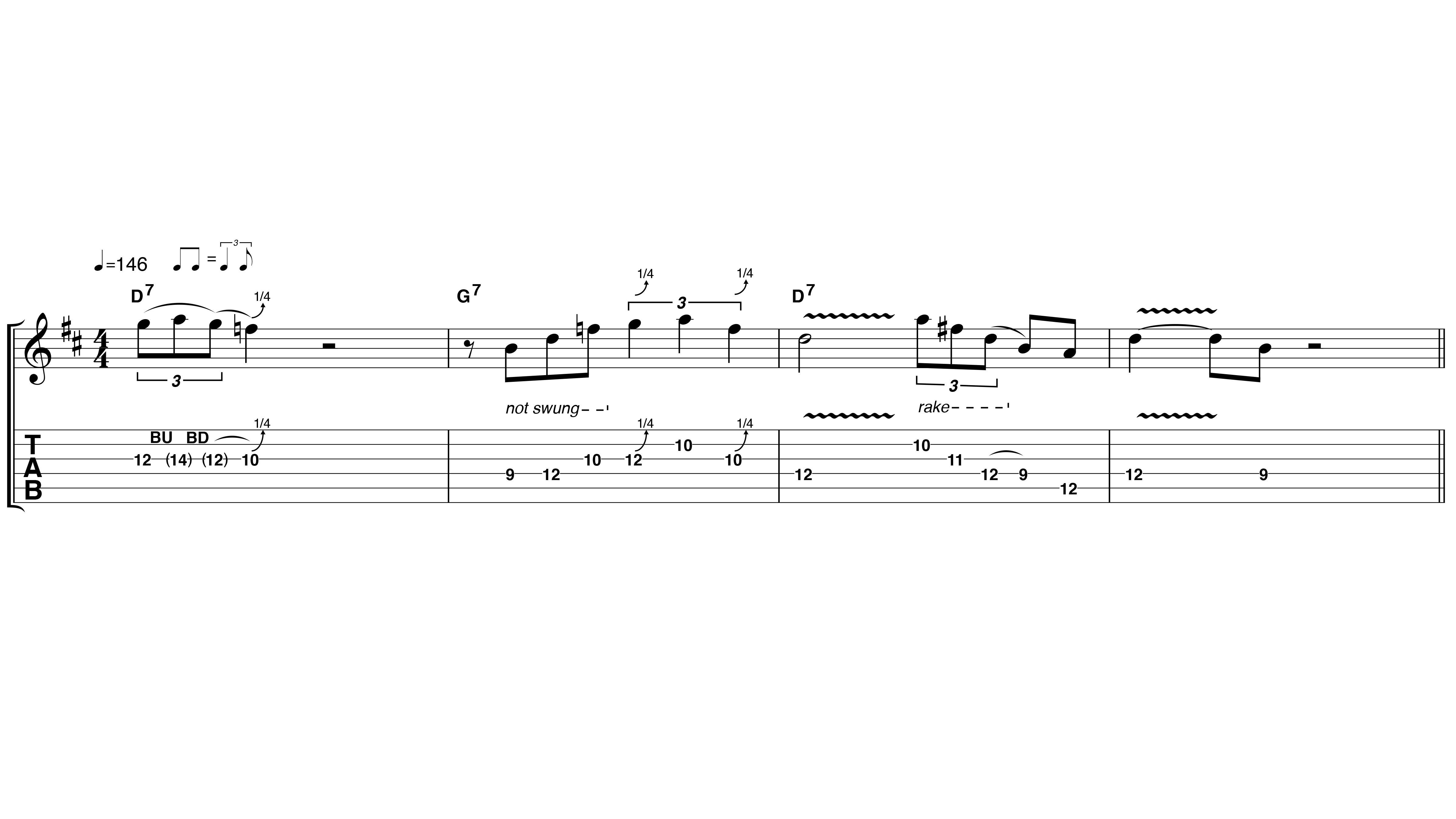
We start with a look at how Albert employed space in his phrasing – the rhythms you play are every bit as important as your choice of notes. Also, check out the repeated use of the 9th fret B note (a major 6th interval). It doesn’t appear in the D minor pentatonic scale (D F G A C) we’re using, but it adds a distinctive flavour to the lick.
2. Repeated notes and vibrato
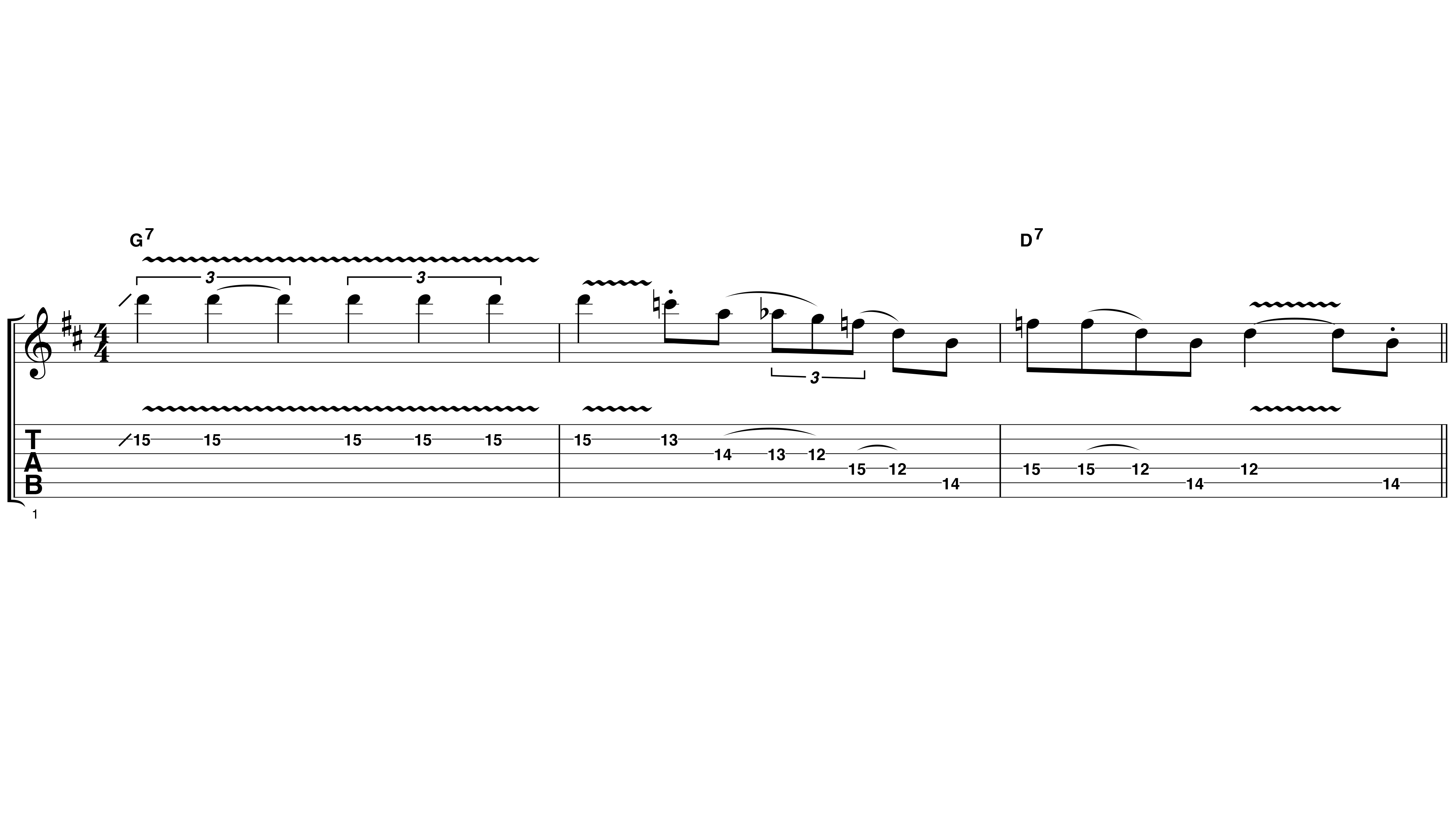
Repeating the same note with a light, shallow vibrato adds an expressive touch to the beginning of this line, moving into a short blues scale run and ending on the major 6th B note again. The idea is to emulate the kind of melodic phrases that would occur as a result of Albert’s unusual open F minor tuning.
3. Flurries of notes
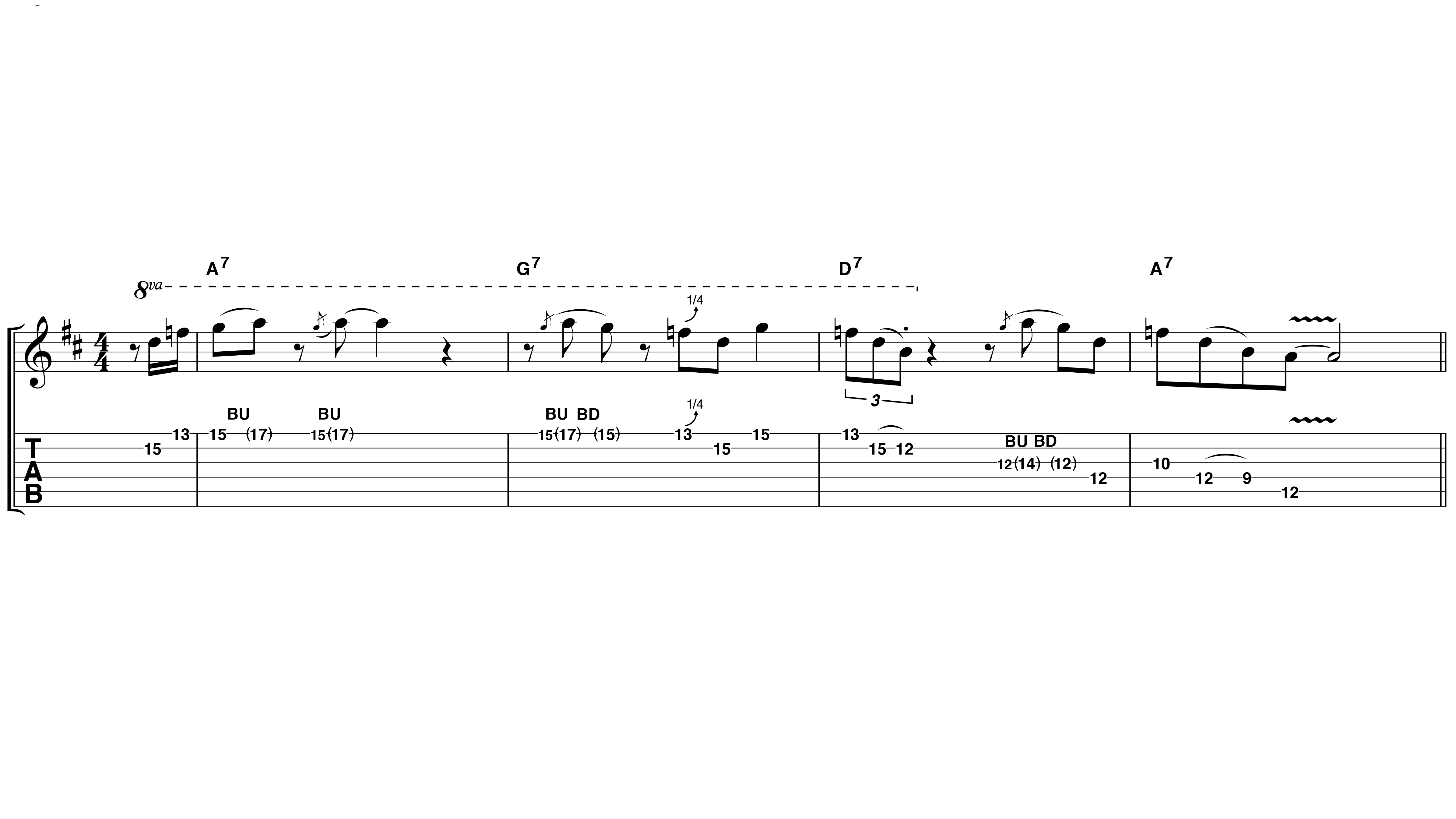
Incorporating brief flurries of notes, this phrase really digs in on those high notes. Again, we’re moving away from basic minor pentatonic scale ideas by including the major 6th interval B note once more. Albert loved his 6ths and you'll hear his solos are peppered with them.
Get the MusicRadar Newsletter
Want all the hottest music and gear news, reviews, deals, features and more, direct to your inbox? Sign up here.
4. Ice picker
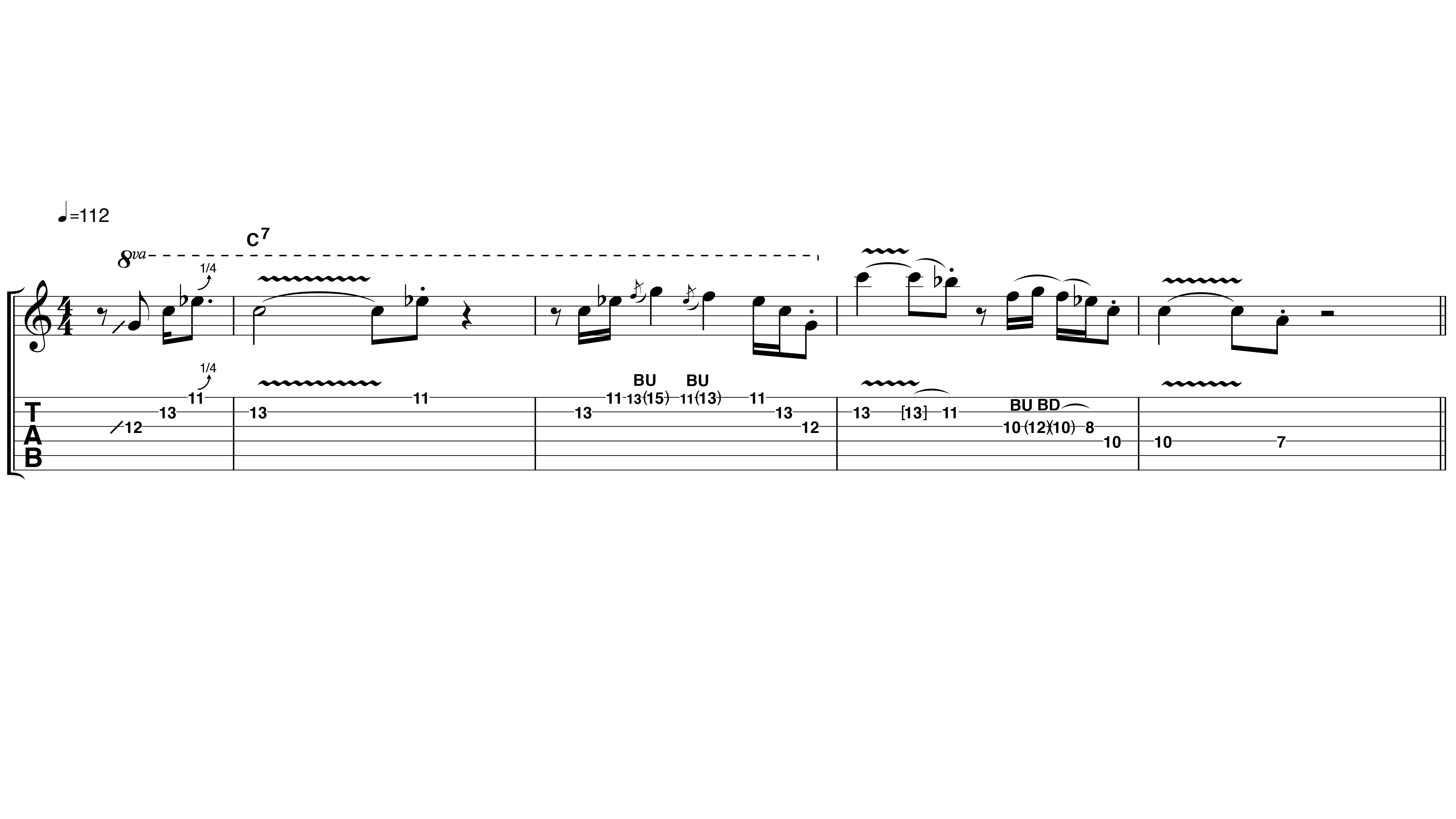
Here we’re looking at Albert’s more aggressive style, using a biting bridge pickup tone and really digging in with the picking fingers. This lick also demonstrates some real Albert trademarks: short, sharp flurries of notes, high string bends, and a 6th interval (the 6th is the A note, here in the key of C) right at the very end.
5. Pentatonic phrasing
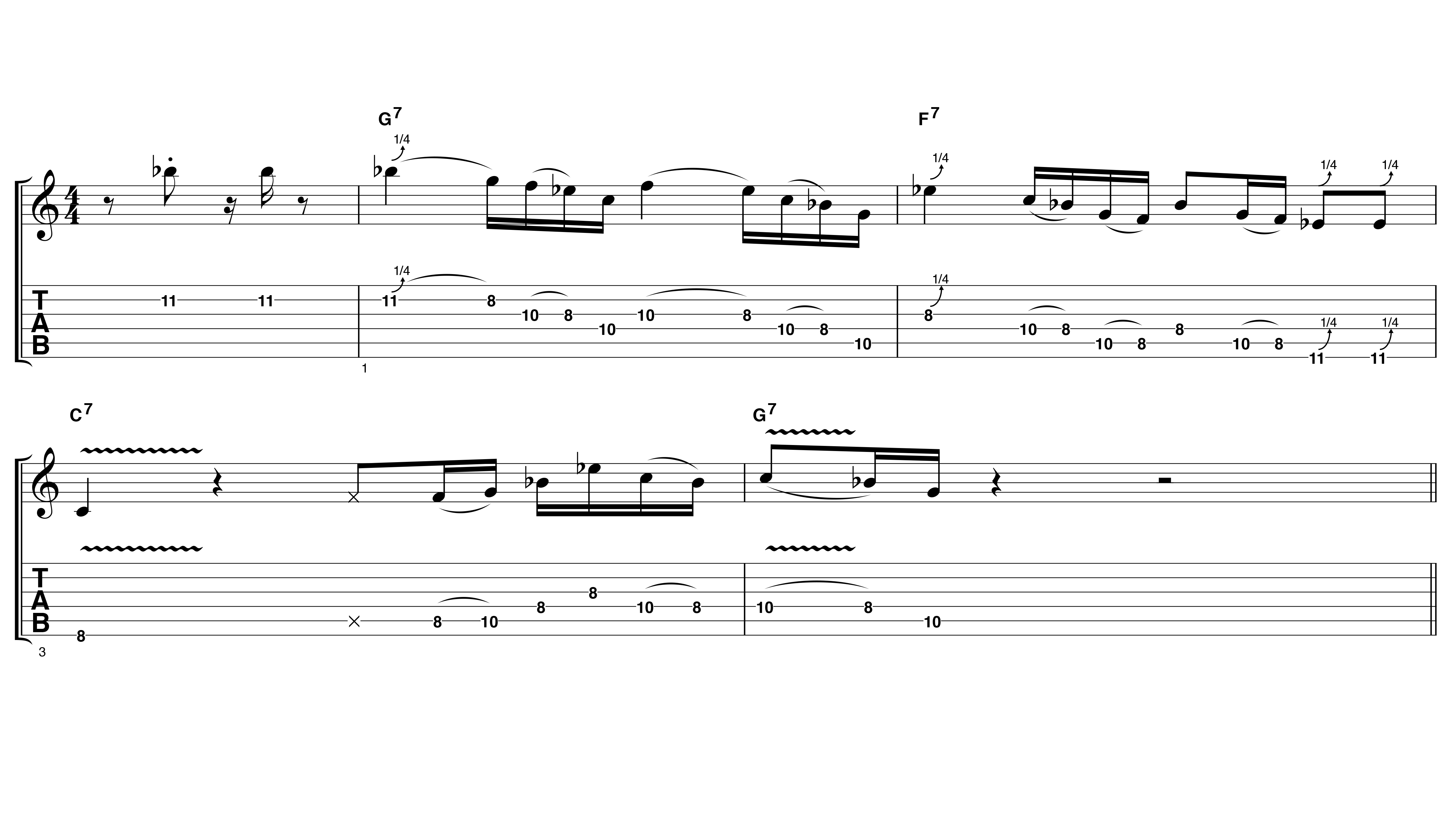
This funky, rhythmic phrase moves across the strings following the shape of the minor pentatonic scale. Once you realise Albert is choosing from a relatively small handful of notes, it becomes easier to work out his phrasing – though it’s difficult to imagine how he got so much from so little!
Backing tracks
Learn 5 of BB King's game-changing guitar solo tricks
Total Guitar is Europe's best-selling guitar magazine.
Every month we feature interviews with the biggest names and hottest new acts in guitar land, plus Guest Lessons from the stars.
Finally, our Rocked & Rated section is the place to go for reviews, round-ups and help setting up your guitars and gear.
Subscribe: http://bit.ly/totalguitar










